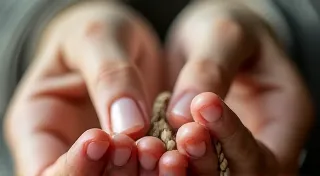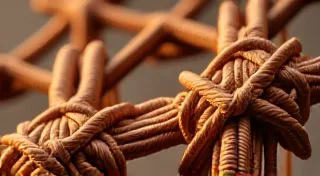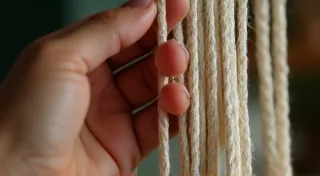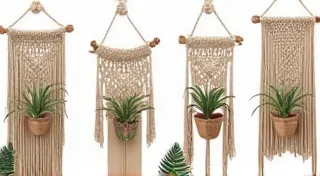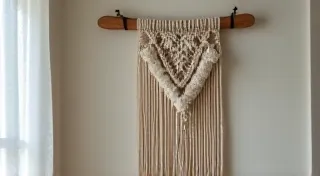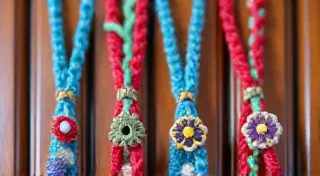The 5 Essential Macrame Knots Every Beginner Should Master
Feeling overwhelmed by macrame? Don't be! Macrame can seem intimidating at first, with its array of knots and techniques. But the foundation of almost every macrame project lies in just a few fundamental knots. This article breaks down the five most essential macrame knots: the square knot, half square knot, lark's head knot, Josephine knot, and double half hitch. With clear, step-by-step instructions and helpful visuals, you'll be knotting like a pro in no time. Perfect for absolute beginners looking to build a solid foundation in macrame.
Why Master These 5 Knots?
These five knots are the building blocks of countless macrame projects – from plant hangers and wall hangings to keychains and bracelets. Once you're comfortable with them, you can combine them to create more complex designs and patterns. Think of them as your macrame alphabet – learn them, and you can write your own macrame stories! Before you even begin learning these knots, it's important to understand how to properly prepare your materials. Knowing how to measure and cut macrame cord correctly will ensure a more enjoyable and professional-looking final product. Incorrect cord length can be incredibly frustrating, so tackling that first!
1. The Square Knot
The square knot is the most frequently used macrame knot. It’s the basis for many patterns and creates a beautiful, balanced look. It's essentially two half knots tied in opposite directions.
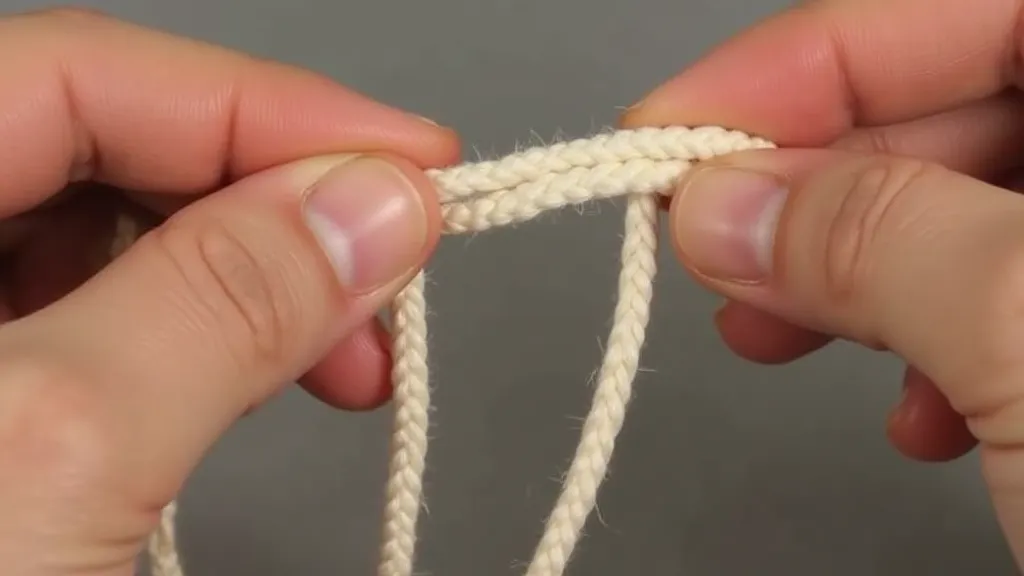
How to Tie It:
- Start with four cords.
- Take the right-hand cord over the two middle cords, and under the left-hand cord.
- Take the left-hand cord under the two middle cords, and over the right-hand cord.
- Pull both ends tight. This is one half of the square knot.
- Repeat the process, starting with the left-hand cord, to complete the square knot.
2. The Half Square Knot
The half square knot is simply one half of a square knot. It's often used to create twisting or diagonal patterns. Mastering both the square knot and its half is crucial, and understanding tension is key to achieving even results. Sometimes, even experienced knotters run into problems with unevenness. It's a common challenge, and sometimes, all it takes is a fresh look at your technique. You can find more information on common macrame mistakes and how to avoid them if you're struggling with unevenness or other issues. The choice of cord also plays a crucial role; certain materials can be more forgiving than others. If you’re new to the craft and unsure where to begin, exploring different macrame cord materials like cotton, hemp, and jute can provide valuable insights into how various textures and properties influence your project's final outcome.
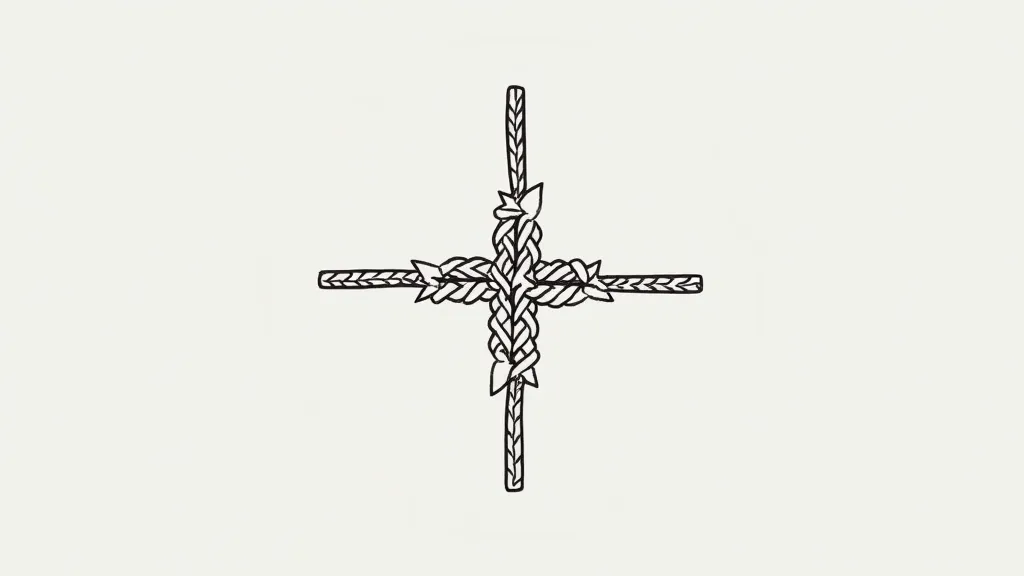
How to Tie It:
- Follow steps 1 and 2 of the square knot instructions.
3. The Lark's Head Knot
The lark's head knot is used to attach cords to a ring or dowel. It’s a simple knot but crucial for securing your cords at the beginning of a project.
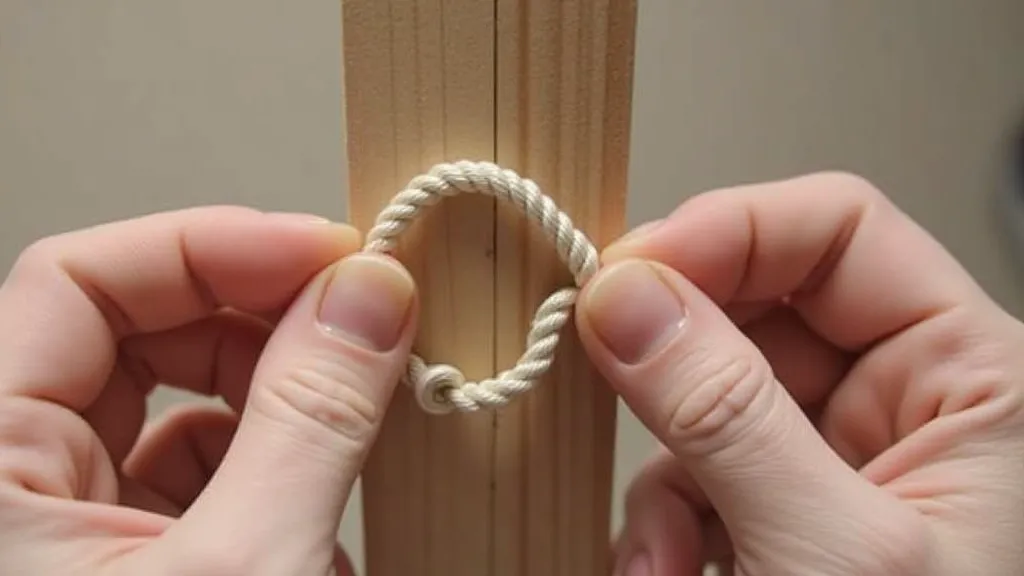
How to Tie It:
- Place a cord behind a ring or dowel.
- Bring the ends of the cord over the ring/dowel and pull them through the loop created.
- Tighten the knot.
4. The Josephine Knot
The Josephine Knot, also known as the spiral knot, is a variation of the square knot that creates a beautiful twisted rope effect. It’s created by only tying one half of a square knot repeatedly. This technique builds on the fundamentals you’re learning here, and using it effectively requires an understanding of how to manipulate tension to achieve the desired aesthetic. Controlling that tension is often the difference between a good project and a truly stunning one. The very essence of texture in macrame lies in the nuance of how you apply pressure and pull. It's a skill that improves with practice and observation. In fact, the principles behind the Josephine knot demonstrate the larger alchemy of cord - transforming tension into beautiful texture. The beauty of this craft isn't just about the knots themselves; it’s about connecting with a long lineage of artisans who have explored similar patterns and techniques, finding their own unique expressions within those frameworks. This connection to history and tradition can be profoundly enriching, offering a sense of belonging and purpose that extends beyond the creation of a tangible object. Consider the rhythmic, almost meditative quality of the work; the repetition can be a pathway to deeper self-awareness and creativity.
How to Tie It:
- Tie a half square knot.
- Continue tying only half square knots.
5. The Double Half Hitch
The Double Half Hitch is often used in patterns to create a specific tension or appearance. It’s essentially two half hitches tied around a cord.
How to Tie It:
- Bring the cord around the main cord.
- Bring the end of the cord under and through the loop formed.
- Repeat the process.
Practice Makes Perfect!
Don't be discouraged if you don't get these knots perfect on your first try. Macrame takes practice! Start with simple patterns incorporating these knots, and gradually work your way up to more complex designs. It’s common to feel frustrated when your projects don’t turn out quite as planned. Remember that each attempt offers a learning opportunity, and troubleshooting can be a rewarding process in itself. Understanding what went wrong allows you to refine your technique and get closer to the results you desire. Experiment with different cord types and textures to discover how they affect the final look. Some cords are easier to work with than others, and finding the right fit for your project is an important part of the creative journey. Don't be afraid to try something new! Many find solace and inspiration in the predictable patterns and rhythms of the craft. This can be particularly valuable in a world often characterized by uncertainty and change. The act of creating something beautiful and tangible with your own hands can be profoundly grounding and restorative.
Mastering these five basic knots unlocks a world of creative possibilities. As you become more comfortable, you’re ready to explore more advanced techniques and designs. Consider incorporating other knots, experimenting with color combinations, and playing with different cord arrangements. Remember, the beauty of macrame lies in its adaptability and the endless ways you can express your individual style. With a little practice and dedication, you’ll be creating stunning macrame projects in no time! The meditative quality of the repetitive motions can be surprisingly effective in reducing stress and promoting relaxation. As you progress, you might even find yourself drawn to exploring the deeper philosophical and spiritual connections inherent in the craft. Many artisans throughout history have viewed macrame not just as a form of artistic expression, but as a pathway to self-discovery and enlightenment. Ultimately, the journey of mastering macrame is about more than just learning a set of techniques; it’s about cultivating a deeper connection to yourself, to the materials you work with, and to the rich tapestry of human creativity. There's something inherently satisfying about transforming a simple collection of cords into a work of art. It's a testament to the power of human ingenuity and the enduring appeal of handmade objects.
